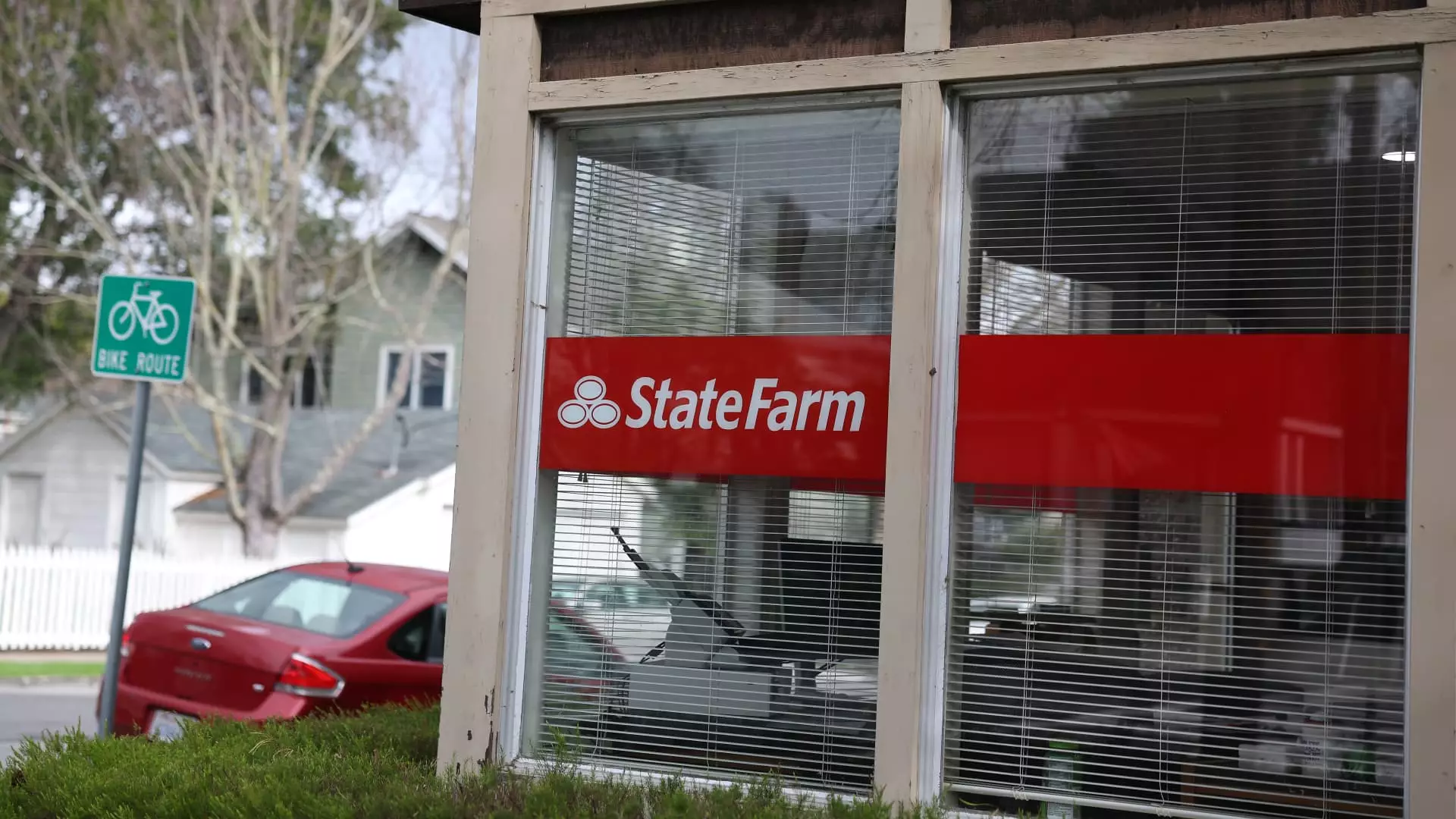This week, State Farm, California’s largest property insurance provider, is knocking on the doors of regulatory bodies, seeking a substantial hike in homeowner rates. With their future casting a long shadow, the insurer’s emergency rate increase request is not just a piece of paperwork—it’s a bold reflection of the escalating tensions between economic viability and consumer hardship in a state battered by nature’s wrath. The wildfires that razed parts of Los Angeles in January, leaving an estimated $250 billion in damages, are the proverbial iceberg that State Farm hopes to navigate around—but at what cost to Californians?
The proposed increases—17% for homeowners and a staggering 38% for rental dwelling policies—have ignited a fierce debate over the ethics of pushing such financial demands onto residents already confronting high living costs and uncertainties in a volatile market. In a state where three million people rely on State Farm for security, the implications of these potential increases are distressingly broader.
Emotional Toll Versus Financial Necessity
It’s crucial to analyze the rationale put forth by State Farm. The company points to its recent payouts of over $2.75 billion for nearly 12,400 claims—a sobering reminder of the human cost behind these financial statistics. While the company argues that the additional funds are necessary to prevent a deeper financial crisis, it’s important to scrutinize the motives behind these appeals. Are these hikes truly about safeguarding policyholders, or are they primarily about preserving corporate health?
Economic complexity is baked into the conversation here. State Farm’s financial woes are not isolated incidents but rather a reflection of the broader instability in the California insurance market, with factors like increased claim payouts and a tumultuous disaster frequency creating a perfect storm. Yet, when homeowners hear phrases like “emergency rate increase,” panic often ensues—further exasperating an already stressful living situation. The downtrodden spirit of Californians, who have borne the brunt of climate change and economic policies, should not have to once again face the uncertainty surrounding their basic shelter.
Regulatory Challenges and Market Dynamics
California Insurance Commissioner Ricardo Lara’s hesitant approach towards rate hikes speaks to the conundrum of governance and business. His reluctance to approve sweeping increases is undoubtedly noble, yet the challenge remains: how can regulation effectively balance corporate responsibility with consumer protection? The current administrative hearing, likened to the Titanic facing an oncoming iceberg, highlights an impending crisis; yet, there seems to be an overwhelming lack of viable solutions on the table.
Organizations like Consumer Watchdog argue that State Farm has not made a case strong enough to justify the requested increases. Their pushback against the proposed rates reflects a growing urgency for regulatory mechanisms to bridge what seems like an increasingly exploitative gap between insurers and the homeowners they serve. As homeowners, many of whom are already working double time to keep their finances afloat, watch their insurance premiums climb, the real question isn’t merely about whether State Farm deserves a rate hike but rather whether these practices—the wild fluctuations in pricing—are sustainable or ethical at all.
A Call for Systemic Reformation
As the insurance industry faces public scrutiny, experts are advocating for a “Sustainable Insurance Strategy.” Such proactivity could provide frameworks allowing for responsible decision-making rooted in catastrophe modeling. Yet, will it be implemented effectively? Janet Ruiz from the Insurance Information Institute stresses the necessity for systemic transformation to prevent future crises, but history has shown that critical reforms often stall in the face of corporate influence.
The complexities of California’s insurance market — where companies like State Farm are rapidly pulling back their offerings — should serve as a wake-up call. There’s an urgent need for comprehensive reforms that hold insurers accountable while also protecting consumers. Torn between financial stability and consumer rights, the state government must act decisively. Maintaining rigid controls on rate increments while reinforcing insurers’ ability to remain solvent will require a delicate balancing act laden with political tension.
As the hearing draws to a close this week, Californians remain at a precipice. With their well-being hinging on the decisions made in these institutional chambers, the average homeowner must question whether their insurers can still offer peace of mind—or if those once unshakeable foundations are eroding. The tension between economic necessity and social responsibility looms large, and only time will tell what side of history these decisions will land on.

